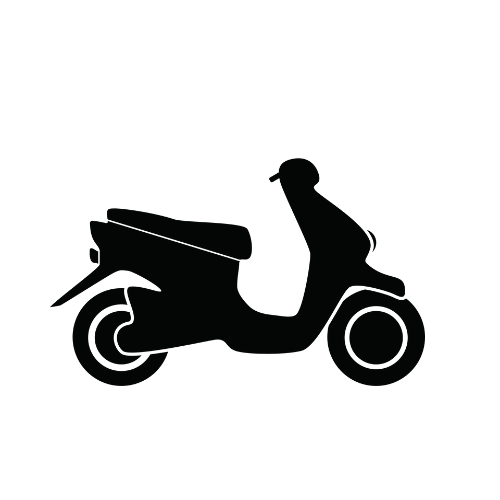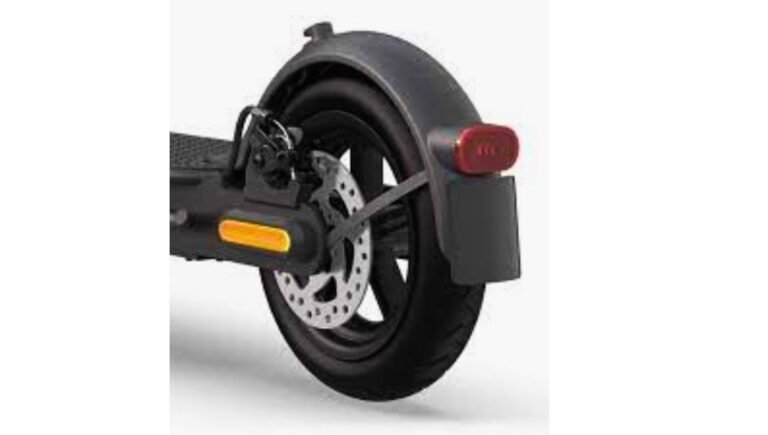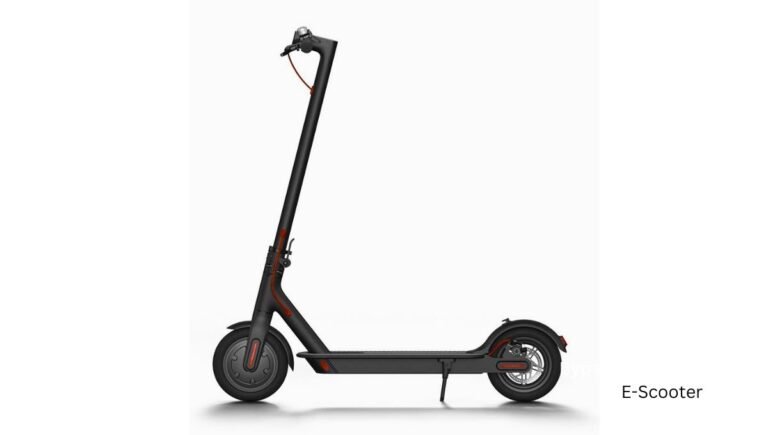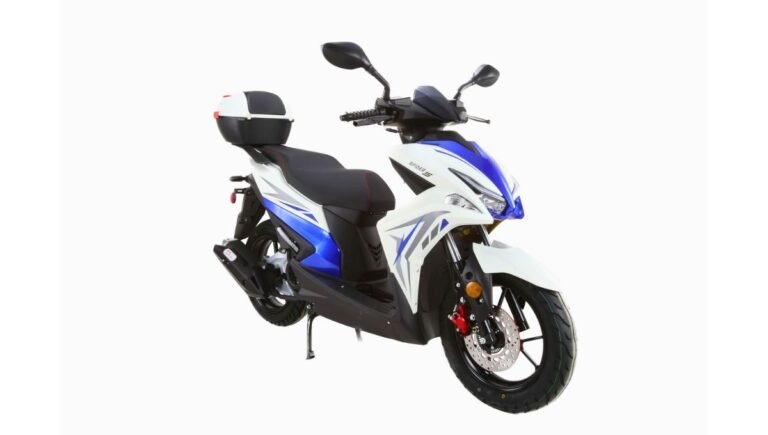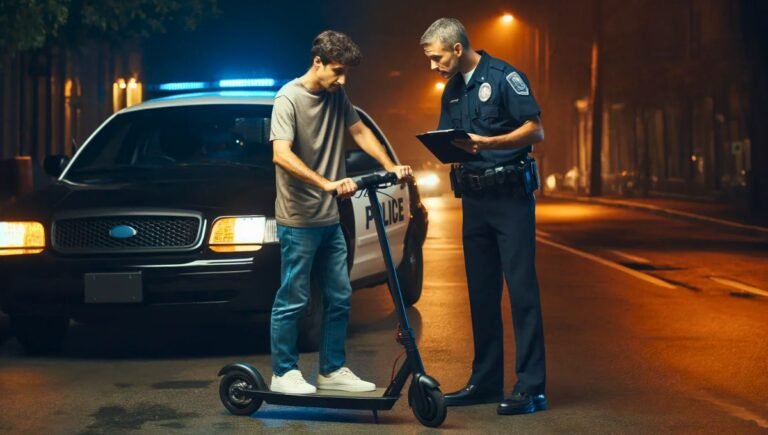Can You Ride an Electric Scooter in the Rain? Safety Tips
Yes, you can ride an electric scooter in the rain. However, it is important to take certain precautions to ensure your safety and maintain the longevity of your scooter.
Riding an electric scooter in wet conditions can increase the risk of accidents due to reduced traction and visibility. To minimize these risks, make sure your scooter has good water resistance and traction tires. Additionally, wear appropriate protective gear such as a helmet, raincoat, and waterproof shoes.
It is also advisable to ride at a slower speed and avoid sharp turns or sudden braking. Regularly inspect and maintain your scooter to prevent water damage and ensure its proper functioning. By following these guidelines, you can safely enjoy your electric scooter even in rainy weather.
Electric Scooters And Weather Resilience
Electric scooters are a convenient mode of transportation, but can you ride them in the rain? Let’s explore the weather resilience of electric scooters.
Water Resistance Ratings Explained
Water resistance ratings indicate how well an electric scooter can withstand water exposure.
- IPX4 rating: Resistant to splashes but not heavy rain.
- IPX5 rating: Can handle water jets, suitable for light rain.
- IPX7 rating: Fully waterproof, can handle heavy rain and puddles.
Scooter Components And Rain Exposure
Exposure to rain can damage various scooter components, affecting performance.
- Tires: Wet surfaces reduce traction, affecting stability.
- Battery: Water exposure can lead to electrical issues.
- Motor: Rain can damage the motor, causing malfunctions.
Safety Concerns In Wet Conditions
Riding an electric scooter in the rain can present safety concerns, requiring extra caution to ensure a smooth and secure journey. Wet conditions can lead to challenges such as increased braking distances, reduced visibility, and potential loss of control. It’s important to be aware of these factors to ride safely in the rain.
Braking Distance Variations
Wet surfaces can significantly increase the braking distance of an electric scooter. This means that it will take a longer distance for the scooter to come to a complete stop. Riders need to anticipate this and apply brakes earlier than they would in dry conditions to ensure safe stopping distances.
Visibility And Control Challenges
Reduced visibility due to rain can make it difficult for riders to see obstacles and for other road users to see the scooter. This poses a risk of accidents and collisions. Additionally, maintaining control of the scooter becomes more challenging, requiring riders to maintain a firm grip and make subtle adjustments to handle the wet and slippery conditions.
Pre-ride Safety Checks
Electric scooters have become a popular mode of transportation for short distances. They are eco-friendly, economical, and easy to ride. However, if you live in an area with frequent rainfall, you may wonder whether it is safe to ride your electric scooter in the rain. The answer is yes, you can ride an electric scooter in the rain, but you need to take some precautions. Pre-ride safety checks are essential to ensure your safety and avoid accidents.
Tire Inspection For Wet Terrain
The tires of your electric scooter play a crucial role in your safety when riding in the rain. It’s essential to inspect your tires before riding in wet weather. Make sure they have enough tread depth, and they are not worn out. The depth of the tread should be at least 2mm. Worn-out tires can cause hydroplaning, which can lead to accidents. You should also check the tire pressure and make sure it is within the recommended range. Low tire pressure can reduce traction, making it more difficult to control your scooter in wet conditions.
Battery And Electrical Connections Check
Electric scooters rely on batteries and electrical connections to power the motor and other electrical components. Wet conditions can damage the electrical connections, leading to a malfunction. Before riding in the rain, check the battery and all electrical connections to ensure they are dry and free from water. Wipe them clean and dry if necessary. You should also check the battery level and make sure it is fully charged. Riding with a low battery can reduce the power output and make it more difficult to ride in wet conditions.
By conducting these pre-ride safety checks, you can ensure that your electric scooter is ready for riding in the rain. Remember to also wear appropriate rain gear, ride slowly, and avoid sudden movements. With proper precautions, you can enjoy your electric scooter even on rainy days.
Protective Gear For Rainy Rides
Riding an electric scooter in the rain requires proper protective gear to stay safe and dry. Invest in waterproof jackets, pants, and gloves to ensure a comfortable and secure ride during wet weather conditions. Additionally, equip your scooter with fenders and non-slip tires for better traction on slippery roads.
Protective Gear for Rainy Rides
Riding an electric scooter in the rain can be an exhilarating experience, but it’s important to stay safe and dry. Essential protective gear is crucial to ensure a comfortable and secure ride, allowing you to navigate through wet conditions with confidence. When it comes to rainy rides, having the right gear can make all the difference. Let’s explore the essential rainwear and waterproof accessories designed to enhance your riding experience in inclement weather.
Essential Rainwear
When riding an electric scooter in the rain, investing in high-quality rainwear is imperative. Waterproof jackets and pants made from breathable materials provide protection from the elements while allowing moisture to escape, keeping you comfortable throughout your journey. Additionally, waterproof shoe covers or overshoes are essential to shield your footwear from rain and splashes, ensuring your feet remain dry and slip-free.
Waterproof Accessories For Scooters
In addition to personal rainwear, equipping your electric scooter with waterproof accessories is vital for a smooth and safe ride in wet conditions. Consider installing fenders to prevent water from splashing onto the scooter, as well as a waterproof cover to shield the entire scooter from rain when not in use. Furthermore, investing in a waterproof bag or backpack is essential for storing valuables and electronic devices while riding in the rain.
By prioritizing essential rainwear and waterproof scooter accessories, you can ride your electric scooter confidently in the rain, knowing that you are well-prepared to handle whatever the weather brings.
Riding Techniques On Wet Surfaces
Riding an electric scooter in the rain can be a fun and convenient way to get around, but it’s important to know the proper techniques to ensure your safety. When it comes to riding on wet surfaces, maintaining balance, cornering, and adjusting your speed are crucial factors to consider. In this section, we will explore each of these techniques in detail.
Maintaining Balance
When riding an electric scooter on wet surfaces, maintaining balance becomes even more important. Here are a few tips to help you stay upright:
- Keep your body weight centered and distribute it evenly between both feet.
- Grip the handlebars firmly, but avoid tensing up your arms.
- Slow down and reduce your speed to maintain stability.
- Be cautious of any sudden movements or changes in direction.
Cornering And Speed Adjustments
Cornering on wet surfaces requires extra care and attention. Here are some techniques to help you navigate turns safely:
- Approach corners at a slower speed to reduce the risk of skidding.
- Lean into the turn while keeping your body weight balanced.
- Avoid sudden acceleration or braking while cornering.
- Choose wider turns to minimize the chance of losing traction.
Additionally, adjusting your speed accordingly is essential when riding in the rain. Here are a few guidelines to follow:
- Reduce your speed to maintain better control and traction.
- Allow for a longer braking distance to compensate for slippery surfaces.
- Avoid sudden acceleration or deceleration, as it can lead to loss of control.
By following these riding techniques on wet surfaces, you can enjoy your electric scooter rides even in rainy weather. Remember to always prioritize your safety and adapt your riding style to the current road conditions.
Post-ride Maintenance
Post-ride maintenance is crucial for ensuring the longevity and performance of your electric scooter, especially if you’ve been riding it in the rain. The exposure to moisture can lead to corrosion and other issues if not properly addressed. In this section, we’ll explore some essential post-ride maintenance steps to keep your electric scooter in top condition.
Drying Your Electric Scooter
After riding your electric scooter in the rain, it’s important to thoroughly dry it to prevent water damage. Use a clean, dry cloth to wipe down all surfaces, including the frame, handlebars, and any exposed electrical components. Pay special attention to the areas where water may have accumulated, such as around the wheels and under the deck. If necessary, use a can of compressed air to blow out any remaining moisture from hard-to-reach areas.
Lubrication And Corrosion Prevention
Moisture from riding in the rain can accelerate the corrosion of metal parts on your electric scooter. To prevent this, apply a thin layer of silicone-based lubricant to metal components such as the bolts, nuts, and hinges. This will help repel moisture and inhibit the formation of rust. Additionally, consider using a corrosion inhibitor spray on the electrical connectors and terminals to protect them from moisture-related damage.
Legal Considerations And Local Regulations
Navigating the legal landscape and local regulations is crucial when riding an electric scooter in the rain. Be mindful of any restrictions or safety guidelines in place to ensure a smooth and lawful experience. Remember to prioritize safety and adhere to all guidelines for a hassle-free ride.
Understanding Local Electric Scooter Laws
Electric scooter regulations may vary by location. Always check local laws before riding.
Insurance Implications For Riding In The Rain
Riding an electric scooter in the rain can affect insurance coverage. Confirm with your provider.
Legal Considerations and Local Regulations
Riding an electric scooter in the rain raises questions about legalities and safety. Understanding local laws is crucial. Ensure you comply with regulations to avoid fines or penalties. Always prioritize safety and follow guidelines to protect yourself and others.
When it comes to electric scooters, regulations differ from city to city. Check with local authorities for specific rules. Adhering to these laws ensures a safe and legal ride.
Insurance coverage is another critical aspect to consider. Riding in wet conditions may impact your policy. Confirm with your insurance provider to understand any limitations or implications.
In some areas, riding an electric scooter in the rain may void insurance coverage. Stay informed to avoid any unforeseen issues. It’s essential to be aware of the potential risks and take necessary precautions.
Remember, safety should always be the top priority when riding in adverse weather conditions. Be prepared and informed to enjoy a smooth and legal riding experience.
Alternatives To Riding In The Rain
When the weather is less than ideal for riding your electric scooter, there are several alternatives to consider. Let’s explore some options to keep you dry and safe.
Public Transport Options
Utilize buses, trains, or subways to get around during rainy weather. Check schedules and routes for convenient transportation alternatives.
Indoor Parking And Storage Solutions
Look for indoor parking garages, bike shelters, or storage facilities to keep your electric scooter protected from the rain. This can help prevent damage and rust.
Conclusion
Riding an electric scooter in the rain can be risky, but it is possible with proper precautions. It’s important to choose a scooter that is waterproof and has good traction on wet surfaces. Additionally, wearing appropriate gear like a raincoat, gloves, and helmet can ensure your safety.
Remember to ride cautiously and avoid any puddles or slippery spots on the road. Stay safe and enjoy the ride!
